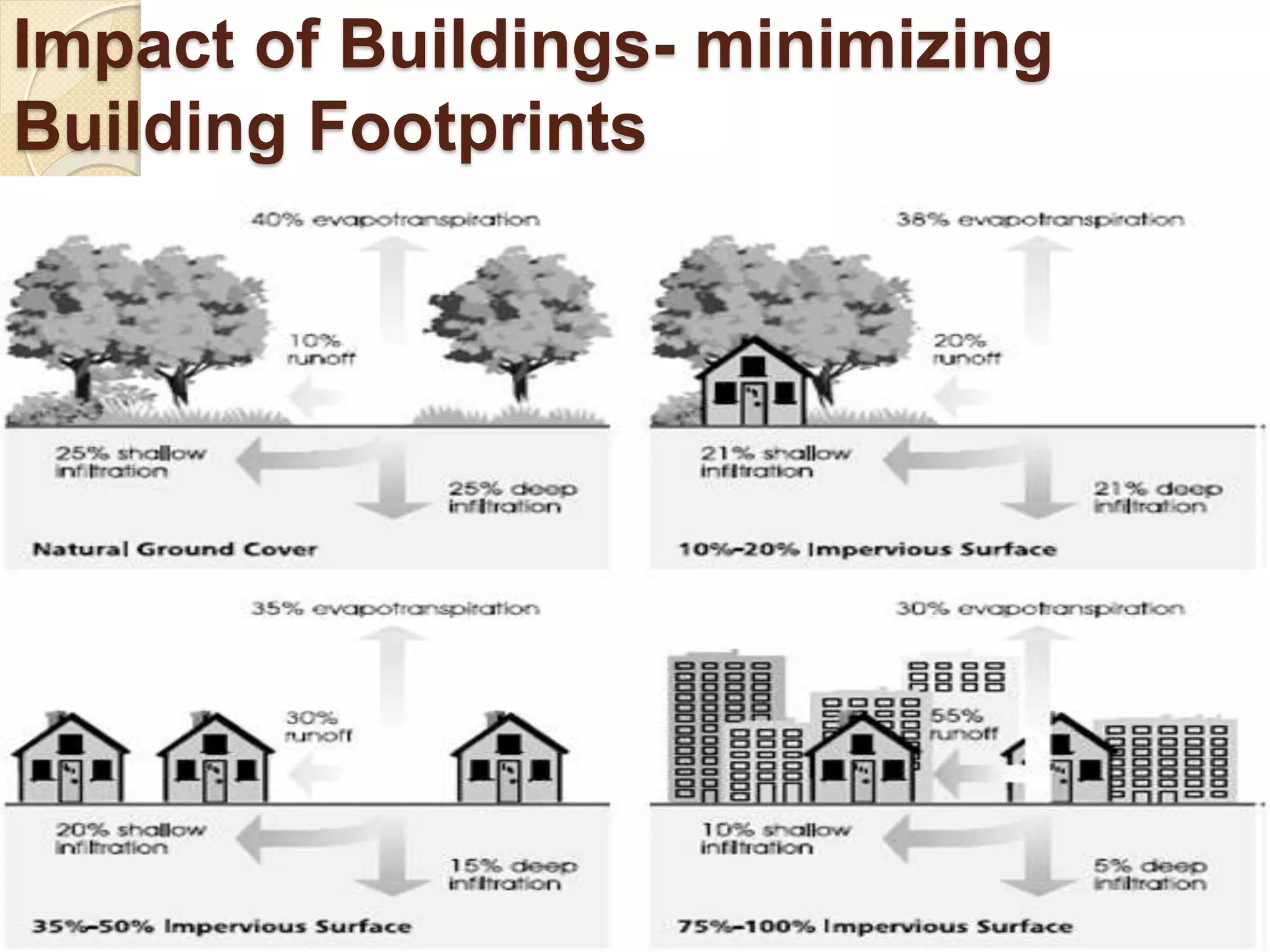The document discusses the significance of buildings in human development while highlighting their impact on energy consumption, resources, and environmental pollution. It advocates for the design and construction of net zero buildings and green buildings, emphasizing strategies for energy efficiency, water conservation, and the adoption of sustainable materials and technologies. The goal is to create a built environment that minimizes carbon footprints and enhances the quality of life for occupants through climate-responsive design.


















































